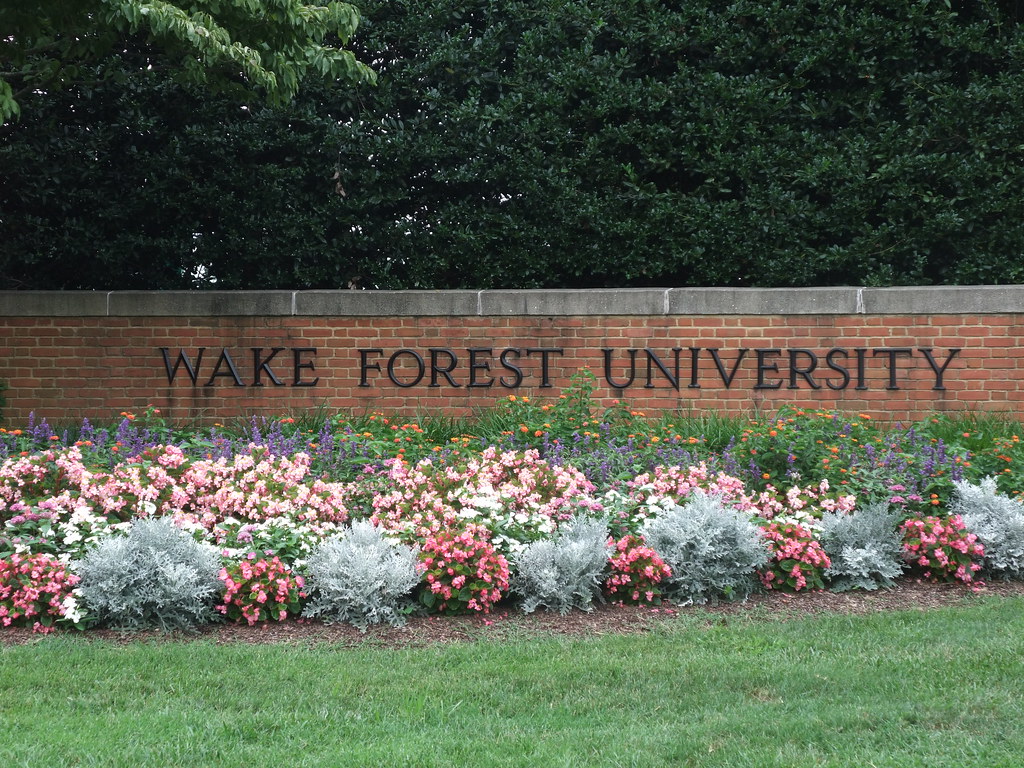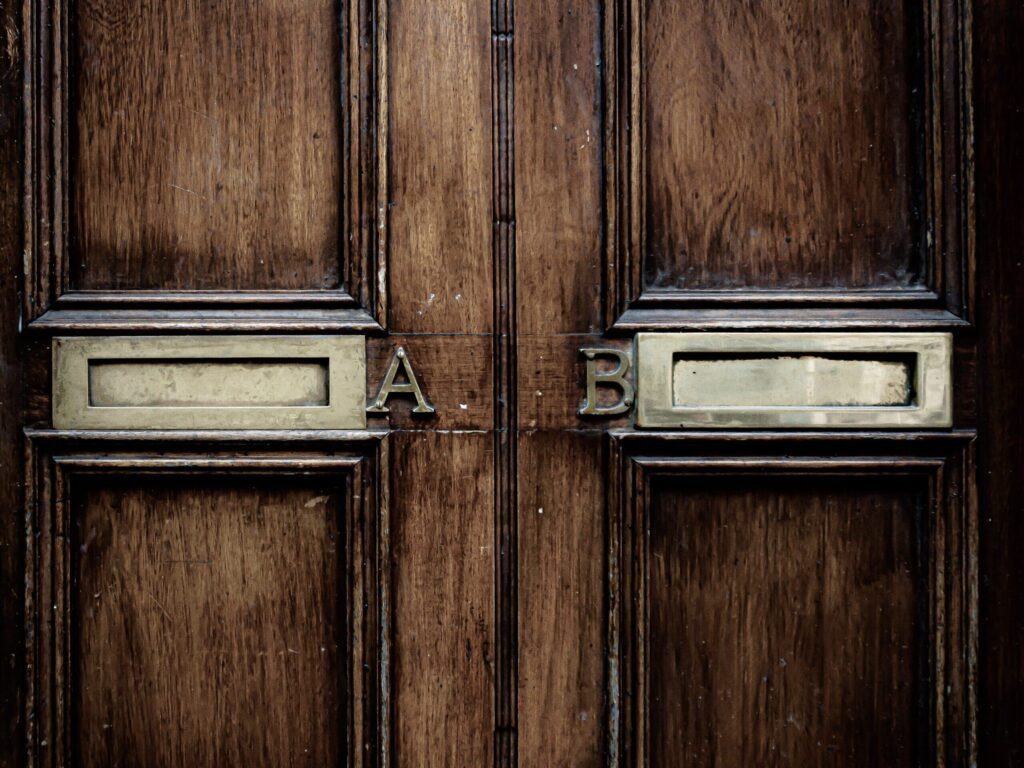
Wake Forest acceptance rate – General introduction
Are you a student looking for a mid-size, private liberal arts university in the beautiful suburbs of North Carolina? Wake Forest University could make its way onto your college list. There are lots of aspects to consider when choosing a college. One key factor for many students is the college acceptance rate. For students interested in Wake Forest, the Wake Forest acceptance rate.
College acceptance rates can vary widely, from very selective, like the acceptance rate for Cornell (9%), to nearly 100%. In creating your college list, you will want to consider college acceptance rates. That way, you can build a comprehensive list of match, safety, and reach schools. For more on balancing your college list, check out our article on picking a great list of colleges.
This guide to the Wake Forest University acceptance rate will cover:
- The Wake Forest University Acceptance Rate
- Is Wake Forest a good school?
- Wake Forest acceptance rate trends
- Comparing college acceptance rates in North Carolina
- Additional Wake Forest admissions statistics
- Wake Forest admissions process
Keep reading to answer all your questions about the Wake Forest acceptance rate.
Acceptance rate for Wake Forest
Founded in 1834, Wake Forest is a private liberal arts college located in Winston-Salem, North Carolina. With total undergraduate enrollment at 5,447 students as of 2022-2023, Wake Forest qualifies as a mid-size school. The U.S. News & World Report ranks Wake Forest #29 in the nation. At #29, Wake Forest is a very selective university.
This means that the Wake Forest enrollment is undoubtedly lower than other colleges ranked lower by U.S. News. It follows that Wake Forest admissions are very competitive, and the Wake Forest University acceptance rate reflects this.
The Wake Forest acceptance rate for 2022-23 was 20%. The Wake Forest acceptance rate classifies Wake Forest as one of the most selective schools. So, you can assume that the Wake Forest GPA requirements and Wake Forest SAT requirements will be higher than those of other schools with higher college acceptance rates. If all of the colleges on your college list have similar acceptance rates, make sure to also apply to some schools with higher college acceptance rates to balance your list.
Making sense of the Wake Forest acceptance rate

What do all of these statistics mean for your Wake Forest application? Since the Wake Forest University acceptance rate is only 20%, you need to put extra thought and effort into every part of your Wake Forest application. This will help you convey to the Wake Forest admissions committee that you would enrich the Wake Forest community.
Note that a few of the supplemental essays for Wake Forest are optional. However, since the Wake Forest acceptance rate is only 20%, you should write every supplemental essay to maximize your admissions odds. If you’re curious about the supplemental essays for the Wake Forest admissions cycle, check out our article on Wake Forest supplemental essays.
Still not sure how the Wake Forest acceptance rate affects your application? For more information on how to get into Wake Forest, take a look at our comprehensive article on Wake Forest admissions.
What is Wake Forest acceptance rate?
According to their official website, the Wake Forest acceptance rate for the most recent class, 2022-2023, is 20%. College acceptance rates are a ratio: the number of students who apply to the number of students accepted.
At Wake Forest, there were 17,496 students who applied, and out of those students, only 3,601 were accepted. The Wake Forest enrollment that same year was 1,379. Note that the Wake Forest enrollment is the number of students who actually chose to attend Wake Forest. In contrast, the Wake Forest acceptance rate is how many students are admitted by the Wake Forest admissions committee.
Comparing to other selective schools

How does this acceptance rate compare to those of other selective schools? The acceptance rate for Cornell is 9%, significantly lower than the Wake Forest University acceptance rate. However, this does not mean that an education at Wake Forest is any less valuable than one at Cornell. College acceptance rates only speak to the quantity of applicants, not the quality. So, yes, the acceptance rate for Cornell is lower than the Wake Forest University acceptance rate. However, this does not mean that the quality of the students is any better at Cornell than at Wake Forest. It also does not mean that you would receive a better education at Cornell than at Wake Forest.
What are your chances?
But the Wake Forest University acceptance rate is still only 20%. College acceptance rates are the ratio of students who apply versus students who enroll. This means out of every 100 students who apply, only 20 get in. Put simply, that’s one out of every five applicants. In order to make yourself stand out to Wake Forest admissions, you must pay attention to every part of your Wake Forest application. You should also consider the Wake Forest GPA requirements and the Wake Forest SAT requirements. This will help you decide whether Wake Forest is a good fit for you.
But does the Wake Forest acceptance rate of 20% mean that Wake Forest is a “good” school? Read on to find out.
Is Wake Forest a good school?
If you’re considering applying to Wake Forest, you might be wondering whether Wake Forest is a good school. Try thinking instead: “Is Wake Forest a good school for me?”
There are myriad factors that go into deciding what school might be a good fit for you. Wake Forest is a private liberal arts college in a suburb of North Carolina. It has an undergraduate student body of around 5,400. If you are looking for a mid-size, suburban school in the South that “combines the facilities of a research institution with a degree of faculty engagement most often associated with small liberal arts colleges,” then Wake Forest enrollment might be a great choice for you!
More than prestige
However, if you have other priorities when choosing a college—if you’re looking for a specific major not offered at Wake Forest, like nursing, or if you crave the excitement of a large undergraduate student body—then you might want to consider schools that have those aspects.
A low acceptance rate does not make a school inherently “good” or better than schools with higher acceptance rates. Just like the acceptance rate for Cornell doesn’t necessarily make Cornell a better university than the University of Georgia, Wake Forest is not necessarily a better school than somewhere like Elon. If you are wondering whether Wake Forest is a selective school, the answer is yes. The Wake Forest acceptance rate is 20%, qualifying it as a very selective school.
Wake Forest rankings
But what about Wake Forest’s U.S. News & World Report ranking? Wake Forest ranks within the top 30 “best” schools in the United States. So, by the standards of that list, Wake Forest is definitely a good school. However, when ranking schools, U.S. News considers a lot more than acceptance rates. They also consider factors like graduation and retention rates, faculty resources, and even graduate indebtedness.
Ranking lists are a useful way to get a feel for how a school broadly compares to others along a spectrum of metrics. Still, remember that the only person who can rank the best schools for you is you.
Wake Forest acceptance rate trends

Are you seeing different Wake Forest acceptance rates listed on different websites? College acceptance rates change from year to year, but they generally hover around the same number. For example, the college acceptance rate for Cornell is generally listed as 10%, but the average acceptance rate for Cornell over the past 10 years has been 12%, and the acceptance rate in recent years was closer to 9%.
As the official Wake Forest website boasts, “Wake Forest is the only college in the history of the U.S. News rankings to advance from classification as a Regional University to the Top 30 of the National Universities list.” This rise in ranking likely signals that Wake Forest University acceptance rates have decreased over time.
Moreover, the Covid-19 pandemic has caused acceptance rates at elite universities like Wake Forest to decrease. Due to the increase in holistic admissions and test-optional policies, more students are likely emboldened to apply to selective universities. As the number of applicants goes up, the Wake Forest enrollment number stays consistent. So, the Wake Forest acceptance rate gets smaller and smaller. If you are choosing to apply test optional and foregoing Wake Forest SAT requirements, pay even closer attention to meeting other metrics like Wake Forest GPA requirements and supplemental essays in your application.
Comparing college acceptance rates in North Carolina
Are Wake Forest acceptance rates the lowest in North Carolina? Not by the slightest. North Carolina is home to many other academically rigorous and prestigious schools. These include Elon, UNC Chapel Hill, and Duke.
If you’re looking to go to school in North Carolina but are daunted by the Wake Forest University acceptance rate, consider Elon University. Elon has an acceptance rate of 78%, which would ordinarily place it solidly in the category of “safety.” Though Elon might be a safety school compared to Wake Forest, note that the average GPA for the class of 2025 was 4.07–always remember that acceptance rates are only one piece of the puzzle. If you’re interested in more information about Elon, check out a virtual tour of the university!
If you want to add another competitive school to your list, UNC Chapel Hill is a great option, with a similar acceptance rate to the Wake Forest acceptance rate: 19%. Unlike Wake Forest, UNC Chapel Hill’s undergraduate population is 10,000. So, if you’re looking for the selectivity of Wake Forest but aren’t satisfied with a smaller student body, UNC Chapel Hill could be a good college to swap in. And if you’re searching for Ivy-like prestige in North Carolina, try Duke: it has an acceptance rate of 6%, even lower than the acceptance rate for Cornell.
Additional Wake Forest admissions statistics

If you want to know how to get into Wake Forest, you will need to consider multiple different factors of Wake Forest admissions. Some of the most influential statistics about Wake Forest after the Wake Forest acceptance rate are the Wake Forest GPA requirements and the Wake Forest SAT requirements.
The Wake Forest SAT requirement is not official, and the school is currently test-optional. However, the average student admitted to Wake Forest scores between 1350 and 1500 on the SATs. If your SAT scores don’t fit in this range, no need to panic–one-quarter of students admitted score above this range and one-quarter scores above. Additionally, since Wake Forest is currently test-optional, you are not required to submit SAT or ACT scores.
Despite this policy, keep in mind that Wake Forest is one of the most selective schools. So, you need to provide the Wake Forest admissions committee with enough information about yourself in order to make a good case for your admission. If your SAT score is close to the specified range, you should submit it.
Just like the Wake Forest SAT requirement, there is no official Wake Forest GPA requirement. However, as it is ranked #29, Wake Forest will look at an applicant’s GPA to see if they can handle the necessary academic rigor. Since the SAT range is between 1350 and 1500, you can assume that the average Wake Forest GPA is around 3.9.
Other important statistics for you to consider include the enrollment number, the net price, and the faculty-to-student ratio. You can find these statistics and more, including why we label Wake Forest an A+ school, on our Wake Forest page.
Wake Forest acceptance rate and admissions process
The Wake Forest University acceptance rate is only one aspect of their admissions process. Wake Forest admissions are very selective. If you have a top-tier academic record, varied extracurriculars where you have invested time and taken initiative, and a commitment to crafting the best possible supplemental essays, you will have a strong Wake Forest application.
A crucial component of the Wake Forest Admissions process is deadlines. This means deciding which application deadline is right for you and sending in your Wake Forest application on time.

Wake Forest has Early Decision I and II. Applying Early Decision to Wake Forest means that if you are admitted, you will be bound to attend Wake Forest. So, if Wake Forest is your dream school, you should consider applying Early Decision. The first deadline for ED is November 15, and the deadline for ED II is January 1. The Regular Decision deadline is also January 1–if Wake Forest is a school you are excited about but you are not ready to commit if accepted, you should apply Regular Decision on January 1. If you send in your Wake Forest application for Regular Decision, you should hear back from Wake Forest on April 1.
Wake Forest University acceptance rate – Five takeaways
Now that you have read this article about the Wake Forest University acceptance rate, you should feel much more confident in your Wake Forest application. You should also have a solid understanding of the Wake Forest admissions process.
Five takeaways for the Wake Forest acceptance rate:
- The Wake Forest acceptance rate is 20%: Along with its ranking of #29, this makes it one of the “most selective” universities in the U.S.
- Wake Forest is ranked as one of the best 30 colleges in the U.S., but whether Wake Forest is best for you depends on what you are looking for in a school.
- Wake Forest’s low acceptance rate means that it qualifies as a “reach” on a college list: make sure to balance your college list with safeties and matches.
- If studying in North Carolina is your priority, Elon and UNC Chapel Hill are other elite universities with different acceptance rates and qualities.
- To maximize your chances of acceptance at Wake Forest, you should try your best to fulfill all optional requirements, including SAT scores and supplemental essays.
Now, you should have the tools you need to prepare a strong Wake Forest application. Good luck!

This article was written by Rachel Kahn. Looking for more admissions support? Click here to schedule a free meeting with one of our Admissions Specialists. During your meeting, our team will discuss your profile and help you find targeted ways to increase your admissions odds at top schools. We’ll also answer any questions and discuss how CollegeAdvisor.com can support you in the college application process.
